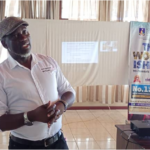Ground work begin for Daeyang Luke teaching hospital
Published on March 9, 2016 at 2:34 PM by Robert Ngwira
Ground work has begun ahead of the construction of a multi-million dollar Daeyang Luke Teaching Hospital, a facility that is set to be better than what the hospital currently offers in terms of personnel, equipment and services.
Hospital Director Dr. Douglas Lungu revealed in an exclusive interview with Malawi News Agency that it is expected that upon completion, the 270 beds facility will have a lot of services including state of the art medical equipment.
“We are hoping that with help from the relevant faculty at University of Malawi, we will be able to have a hospital that is comparable or even better services provided in other countries like South Africa and India.
“We are already working to find doctors to work in the facility, we already have a memorandum of understanding with a number of universities in South Korea willing to send us specialists,” Lungu said.
The teaching hospital will be in two parts; the general hospital which will comprise of services to the general public same way as it is happening at the moment and the second part will be a private hospital.
The private part of the hospital was brought up as part of the redesign of the project to cater for the need of a state of the art medical facility that will ensure that the country will no longer be referring patients abroad for further treatment.
Meanwhile, Principle Secretary in the Ministry of Health, Dr. Charles Mwansambo has expressed government’s delight at the project saying it will serve Malawi’s ever growing population.
“The state of art teaching medical facility will ease the load on Kamuzu Central Hospital and train local doctors. Government will also save forex as most patients that would otherwise have travelled abroad, will be treated locally,” he said.
The teaching hospital will be constructed by Daeyang Construction Company to the tune of between US$25-30 million, with money coming from the Miracle for Africa Foundation, including the purchase of equipment required.
It is expected that construction of the project will be completed by December 2017 or early 2018.


